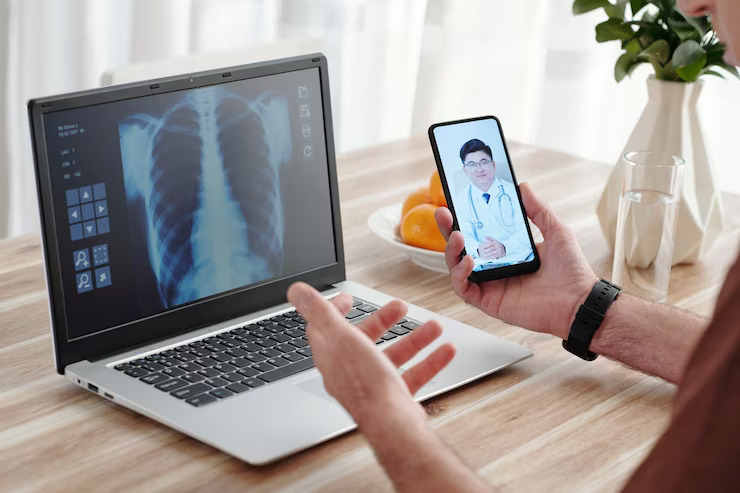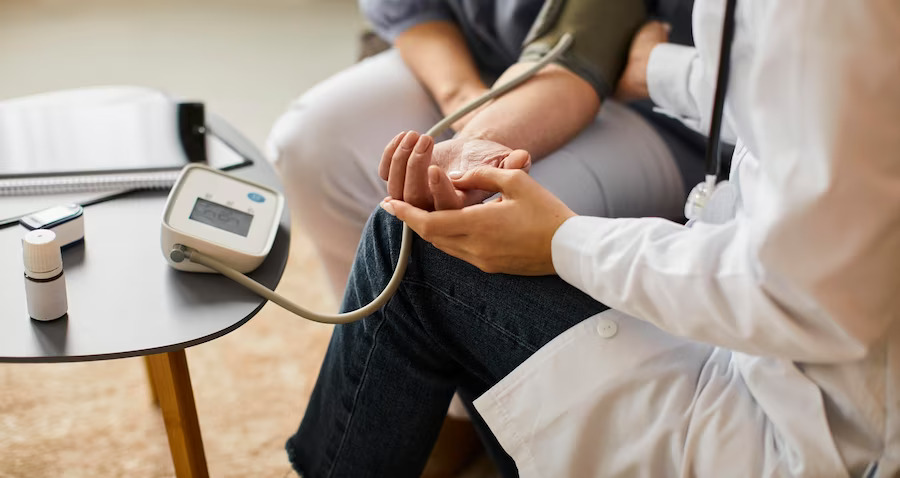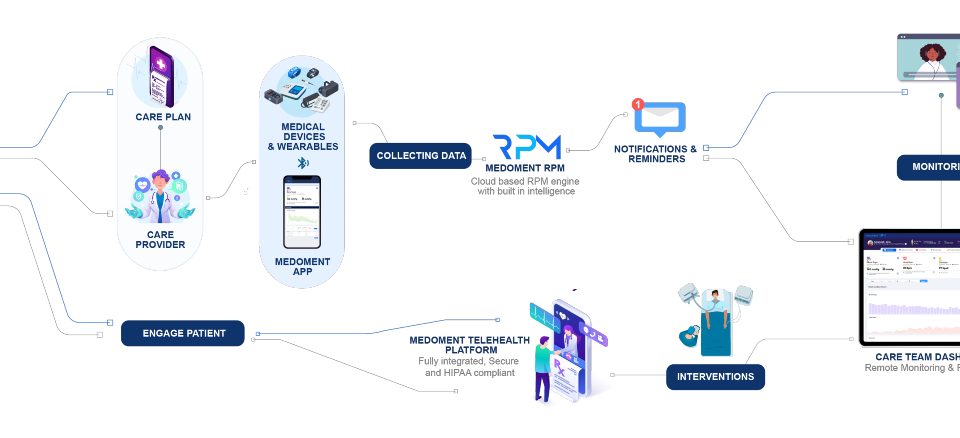
Can telemedicine be used during pregnancy?
January 31, 2023
Remote Patient Monitoring for Chronic Disease Management
April 30, 2023Cardiovascular diseases (CVDs) are the leading cause of death globally, taking an estimated 17.9 million lives each year, the majority due to heart attacks and strokes. Many early deaths could be prevented by reduction of risk factors, early diagnosis and treatment.
Behavioural risk factors for CVDs include an unhealthy diet, lack of physical activity, tobacco use, and alcohol abuse. Physiological factors such as hypertension, high blood cholesterol, high blood glucose and obesity can contribute to the development of cardiovascular disease.

How can telemedicine help prevent cardiovascular disease deaths?
Telemedicine is the use of telecommunications technologies to provide clinical services remotely. This includes video consultations, direct messaging, e-prescribing, remote patient monitoring and electronic transmission of medical information. Telemedicine can provide easier access for patients, improve communication with their healthcare provider and reduce health care costs.
Telemedicine can be used for:
- Remote monitoring – using connected devices to monitor blood pressure, heart rate, ECG, blood glucose, weight, or blood cholesterol.
- Virtual consultations – to review medical history, symptoms and vital signs enabling early detection, treatment or advice.
- Identifying patients with an increased risk of cardiovascular disease, enabling early detection, treatment or advice.
- Provision of counselling and patient education on prevention and lifestyle modifications.
- Improved access to cardiology specialists, especially for those in remote areas

How effective is telemedicine for managing risk factors?
Many cardiovascular risk factors can be managed through telemedicine, for both primary prevention and chronic established cardiovascular diseases.
Hypertension and diabetes are risk factors that show great potential to be safely and effectively managed through telemedicine interventions.
One study published in 2022, found that a 12 week remote support programme that included access to web‐based applications and lifestyle guidance, reduced 24‐hour systolic BP among hypertension patients.
Another study compared patients with uncontrolled hypertension enrolled into a home-based digital health blood pressure programme with a matched group receiving traditional care. After 90 days, 71% in the digital health programme group achieved blood pressure control, compared to only 31% of the usual-care patients.
For diabetes, remote monitoring of glucose levels has been demonstrated to improve A1C levels (a measure of average blood sugar over the past 2 to 3 months) in people with previously poor glucose control.
Telemedicine is also useful for monitoring and improving blood cholesterol levels, encouraging exercise and dietary changes, and smoking cessation programmes.

Can cardiovascular disease be diagnosed via telemedicine?
Telemedicine applications can be used in the diagnosis and management of cardiovascular diseases, with the aid of remote monitoring devices. It also enables doctors to consult with cardiology specialists remotely to facilitate diagnosis.
Advances in artificial intelligence and machine learning can aid doctors in analysing large amounts of data from remote monitoring to diagnose chronic diseases and provide personalised lifestyle recommendations to reduce risk factors.

When is in-person care required?
Telemedicine cannot replace every hospital visit and must be used judiciously, alongside in-person care. Urgent or complex cases, those requiring a physical examination or hospital tests often require in-person care.
A heart attack or stroke may be the first sign of underlying disease. Therefore, patients and their families should be aware of the need for emergency in-person medical attention in the case of the sudden development or worsening of any of the following symptoms:
- Pain or discomfort in the centre of the chest
- Pain or discomfort in the arms, the left shoulder, elbows, jaw, or back ● Difficulty in breathing or shortness of breath
- Nausea or vomiting
- A cold sweat or turning pale
- Dizziness and/or loss of balance or coordination
- Sudden weakness or numbness of the face, arm, or leg, most often on one side of the body
- Limb swelling
- Confusion, difficulty speaking or understanding speech

In summary
Cardiovascular diseases, in particular heart attack and stroke, are a leading cause of preventable early death. Advances in telemedicine and remote monitoring are showing great potential to improve the diagnosis and management of CVDs, as well as reduce risk factors. To effectively reduce the impact of cardiovascular diseases, telemedicine should be used wisely, alongside in-person care.
Are you looking for the ideal telemedicine software?
Realise the full potential of integrated remote patient monitoring and telemedicine with Medoment’s innovative and comprehensive patient engagement platform.
Medoment is a state-of-the-art telehealth platform designed by the team at HT Works who specialise in integrated and affordable solutions to the current challenges
in healthcare. Medoment is a complete engagement solution, with remote patient monitoring software, teleconsultations and a patient engagement portal within a single platform.
To find out more, or book a demonstration, contact us today:
RECENT POSTS
- 7 Benefits of Medoment RPM for Your Practice
- Remote Patient Monitoring for Chronic Disease Management
- Can telemedicine help reduce the impact of cardiovascular diseases?
- Can telemedicine be used during pregnancy?
- Can Telemedicine Improve Diabetes Management?
- How to conduct a physical exam via telemedicine
- How can MEDOMENT Optimise Patient Engagement?
- Can patient engagement portals improve healthcare?
- How to choose the right telemedicine software partner
- How to invest in telemedicine software
